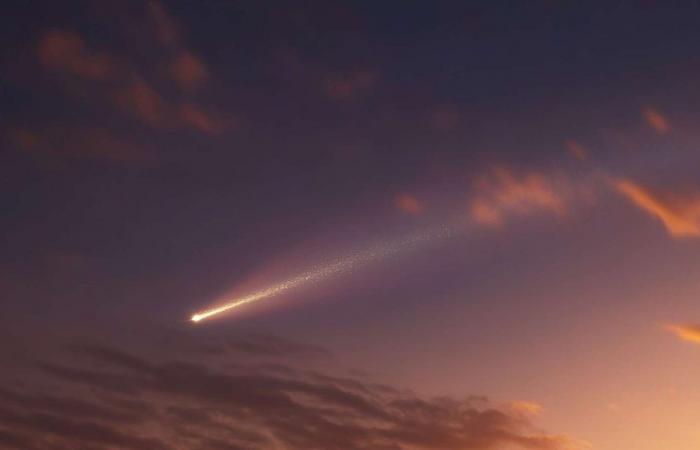A few days ago, comet Tsuchinshan-Atlas, codenamed C/2023 A3, passed its perihelion. And to the great joy of astronomersastronomersit survived its passage near our Sun. Images sent back by the Solar and Heliospheric Observatory (SohoSoho) allowed us to follow her journey even though she had become invisible from our Earth.
Comet Tsuchinshan-Atlas returns
But as of tonight, it’s probably at theeyeeye naked that we will have the opportunity to observe it in our French sky. To do this, it will be necessary to pass between the cloudscloudsOf course. And choose a place with a clear western horizon. Because comet Tsuchinshan-Atlas will appear in this region of the sky, just after sunset. So be ready to observe it from around 7:15 p.m. Especially since it will disappear below the horizon around 8 p.m. From this Saturday, October 12 — the day when the comet will pass closest to our Earth, some 70.5 million kilometers away — it will appear a little higher in the sky every day.
For a few days, comet Tsuchinshan-Atlas should be visible to the naked eye. But even more brilliant with binoculars. Always be careful to wait until the Sun has disappeared from the picture to avoid burning your eyes.
Seti and Unistellar need you to study the fantastic comet Tsuchinshan-Atlas
Remember that comet Tsuchinshan-Atlas, discovered in January 2023, had already been visible from our northern hemispherenorthern hemisphere a few days ago. But just before sunrise this time.
In some regions of the world, it can even be observed with the naked eye. With a magnitude of around 1.5, it became the brightest comet since Comet Neowise. It was in 2020.
When she disappeared from sight on October 6, for those who were close enough to theequatorequatorit had reached a beautiful magnitude.
A comet that goes away only to come back better
But comet Tsuchinshan-Atlas had not finished making headlines. Some hoped to see it in broad daylight on October 8 and 9. They were counting on a magnitude of around -4.5. It reached -5 on October 9.
So, taking care not to take a risk for their eyes by having the Sun in their field of vision, a few amateur astronomers managed to immortalize the comet Tsuchinshan-Atlas in broad daylight.
The comet Tsuchinshan-Atlas, star of our early nights
It is now at the beginning of the night that we will wait for the return of comet C/2023 A3. Starting October 11 and for a few days, it will first point towards Earth before a second tail appears, in the other direction.
Observations should be favored by earlier sunsets and shorter twilights at this time of year in our northern hemisphere. On the other hand, beware of full moonfull moon which could mask the brightnessbrightness of comet C/2023 A3 around October 17.
Some remarkable dates for the observation of comet Tsuchinshan-Atlas
Note that on October 15, in its journey through the constellationconstellation of the Serpent and that of Ophiucus, the comet Tsuchinshan-Atlas will pass close – only apparent, of course – to the globular cluster M5. The day before, our Earth will have crossed the orbital plane of the comet. Enough to lighten its tail a little more and reveal a clear and bright line – due to the dust present in the orbital plane that we will see from the edge – above.
Later in October, the comet that has moved away from us and our Sun will be less bright. But higher in our sky. It should therefore remain visible using binoculars or small instruments.






